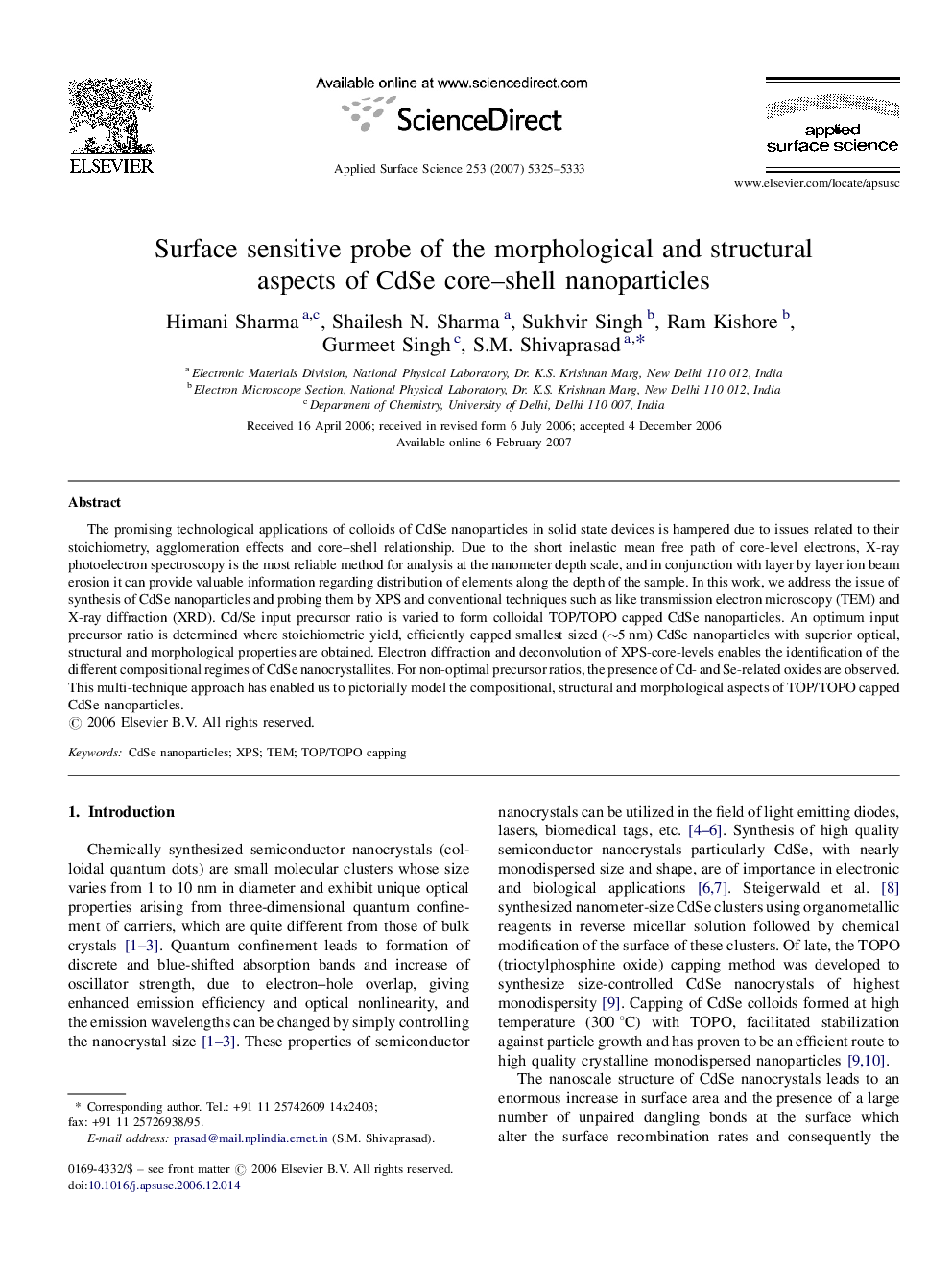| Article ID | Journal | Published Year | Pages | File Type |
|---|---|---|---|---|
| 5367112 | Applied Surface Science | 2007 | 9 Pages |
The promising technological applications of colloids of CdSe nanoparticles in solid state devices is hampered due to issues related to their stoichiometry, agglomeration effects and core-shell relationship. Due to the short inelastic mean free path of core-level electrons, X-ray photoelectron spectroscopy is the most reliable method for analysis at the nanometer depth scale, and in conjunction with layer by layer ion beam erosion it can provide valuable information regarding distribution of elements along the depth of the sample. In this work, we address the issue of synthesis of CdSe nanoparticles and probing them by XPS and conventional techniques such as like transmission electron microscopy (TEM) and X-ray diffraction (XRD). Cd/Se input precursor ratio is varied to form colloidal TOP/TOPO capped CdSe nanoparticles. An optimum input precursor ratio is determined where stoichiometric yield, efficiently capped smallest sized (â¼5Â nm) CdSe nanoparticles with superior optical, structural and morphological properties are obtained. Electron diffraction and deconvolution of XPS-core-levels enables the identification of the different compositional regimes of CdSe nanocrystallites. For non-optimal precursor ratios, the presence of Cd- and Se-related oxides are observed. This multi-technique approach has enabled us to pictorially model the compositional, structural and morphological aspects of TOP/TOPO capped CdSe nanoparticles.
